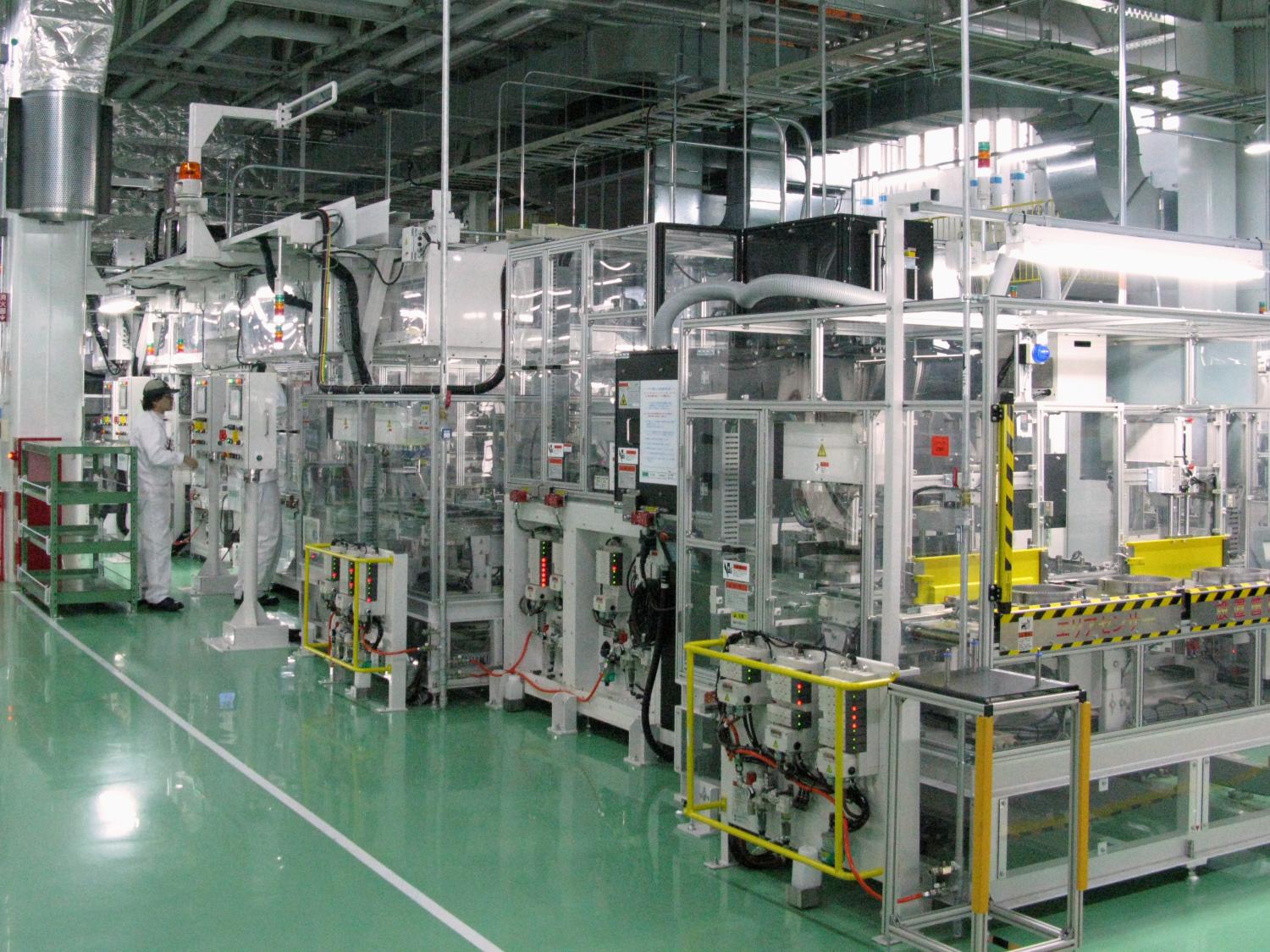This brief is the second in a series of three exploring trends, measurement, and the outlook in productivity growth over the past two decades in major economies. It is part of a project on the “Great Paradox” of technological change, stalled productivity growth, and inequality being undertaken jointly by the Global Economy and Development Program at Brookings and the Chumir Foundation for Ethics in Leadership.
Declining productivity growth while technology seems to be booming presents a paradox. But is the paradox real or illusory? Is productivity underestimated, especially the gains from innovation in goods and services related to information and communication technology (ICT) that is driving today’s technological change. Standard measures of productivity (labor productivity or total factor productivity) are based on GDP, which excludes consumer surplus. So could measures of productivity based on GDP be underestimating change in economic welfare by missing rising consumer surplus from the new ICT products? Is the productivity slowdown real or an artifact of measurement? There is much debate on these issues.
Growth in productivity has slowed considerably over the past decade or so in major economies. In the U.S., productivity started slowing after 2004; the slowdown in most major European economies started even earlier. Business sector labor productivity growth in the U.S. slowed from an average annual rate of 3.2 percent in 1995-2004 to 1.4 percent in 2004-14. Much of the recent debate, and related research, on productivity measurement issues has focused on this decline in productivity in the U.S. Predating the financial crisis and the ensuing Great Recession, and now continuing for more than a decade, the productivity slowdown in the U.S. does not appear to be just cyclical in nature, but rather seems to reflect also deeper, structural phenomena. There are different views on what factors explain the slowdown. But one view challenges the very reality of the slowdown, arguing that the slowdown wholly or largely reflects the failure of the productivity statistics to capture recent productivity gains, particularly those from new and higher-quality ICT goods and services (see, for example, Brynjolfsson and McAfee 2011 and 2014, Feldstein 2015, Hatzius and Dawsey 2015, and Mokyr 2014).
There are two potentially important sources of underestimation of productivity related to ICT goods and services. First, if prices do not fully capture quality improvements in the new ICT products, price deflators are overestimated and real output (adjusted for improvements in quality, including product variety) is underestimated. Second, many ICT services, in particular internet-based services such as Google searches and Facebook, are largely not reflected in GDP measurement even though they generate substantial utility for consumers, the reason being that their use does not involve monetary cost as they are available free of charge to the users.[1] Thus, GDP data may show that output growth is slowing even as consumer surplus growth continues apace.
Recent research confirms that productivity growth is underestimated, notably because of the two types of mismeasurement identified above. However, it suggests that mismeasurement can at best explain only a relatively small part of the observed decline in productivity growth. In large part, the productivity slowdown—and the associated productivity paradox—are real.
Syverson (2016), for example, finds four empirical challenges to the hypothesis that mismeasurement largely explains the U.S. productivity slowdown:
- Productivity has slowed in many countries and the size of the productivity slowdown is unrelated to the countries’ consumption or production intensities of ICT goods and services that are often cited as the major source of mismeasurement.
- Even if adjustment is made to the price deflators for ICT products to capture quality improvements and the introduction of new goods, such correction would explain only a small part of the estimated $2.7 trillion in missing output resulting from the post-2004 productivity slowdown in the U.S. (which caused measured GDP to fall by 15 percent from its counterfactual level by 2015 Q3). With the ICT industries collectively accounting for less than 8 percent of the total economy in 2004, the adjustment to the price deflators would have to be implausibly high to account for all of the missing output—as much as seven times the magnitude of the actual deflator. The implied true incremental real value added of the ICT industries would have been six times the measured change, and the true labor productivity in the industries would have risen 363 percent over 11 years.
- Estimates of the consumer surplus associated with the use of free internet-linked services, although sizable, fall well short of the missing output from the productivity slowdown. Even the largest estimate (Goolsbee and Klenow 2006), calculated by imputing value to the time consumers spend using these services, accounts for less than one-third of the missing output.
- While measured gross domestic income has on average exceeded gross domestic product since 2004, possibly indicating payments to workers for goods and services produced that are marketed free or at highly discounted prices, this trend began before the productivity slowdown and, moreover, reflects unusually high capital rather than labor income.
For the productivity decline since 2004 to be explained by mismeasurement, a finding that mismeasurement today is significant alone is not enough; mismeasurement must increase relative to the previous period. Byrne et al. (2016) find that mismeasurement of ICT equipment, because of the failure of prices to fully reflect quality change in new products, was substantial even prior to the productivity slowdown.[2] Indeed, for the U.S., they estimate that since domestic production of ICT equipment has fallen with rising imports, the quantitative impact of such mismeasurement on productivity was larger in 1995-2004 (when productivity rose) than in the post-2004 period—despite mismeasurement worsening for some types of ICT products. The authors also examine other issues that can bias productivity estimates, including the rising role of intangible capital (such as investment in research and development, training, and organizational capital), globalization (upward bias in productivity as a result of failure of price indices to capture lower import prices from offshoring), and fracking (technological innovations that allow access to lower quality natural resources). The net quantitative effect of these is small relative to that of ICT-related measurement issues. Overall, correcting for these various measurement biases does make productivity look better than recorded, but the corrections matter even more in the 1995-2004 period. So the post-2004 decline in labor productivity looks even larger (Figure 1, see below).[3]
Byrne et al. also address the measurement issue relating to free internet-based services. They argue that while the gain in consumer welfare from using these innovations is sizable, much of that is not part of market production that GDP is supposed to measure and, therefore, cannot offset the decline in measured productivity of the market economy. Accordingly, they include only a small adjustment for a market component—spending on online advertising—in correcting for productivity underestimation related to internet-based services (it is part of the “other” adjustment shown in Figure 1). However, they note that even if all of the consumer surplus (including non-market benefits) associated with these services were to be counted, by costing the time spent by consumers on using these services, that would add only about 0.3 percent to GDP per year for the U.S. economy. This is small relative to the 1.8 percentage point slowdown in annual business sector labor productivity growth over 2004-14 compared to the preceding decade.
Could it be that the post-2004 productivity slowdown reflects, at least in part, the possibility that the slowdown was concentrated in sectors that traditionally are hard to measure, notably services? This does not seem to be the case. The slowdown in productivity was broad-based, and, if anything, was larger in relatively well-measured sectors such as manufacturing, trade, and utilities (Figure 2). Also, because the slowdown was broad-based, shifting weights in favor of slower-growth, poorly measured service sectors are not the reason for the observed decline in productivity. Productivity growth in the U.S. over the past 25 years would have been essentially unchanged even if sector weights were held fixed (Figure 3). So, shifts in industry composition are not a central part of the story of the productivity slowdown.
While recent research suggests that mismeasurement, although sizable, does not explain most of the observed decline in productivity, it must be noted that there remain unknowns and gaps in data. Digital services present particularly difficult measurement challenges, especially as the composition of the ICT sector continues to shift from hardware to software. Most recent research has focused on measurement issues in the ICT industries themselves, but it is possible that unmeasured incremental gains are being made from digital technologies and related innovations outside these industries, including service sectors such as education and health. Also, the impact of the same technology can vary depending on how it is deployed and used, for example, to reduce costs or raise quality. In general, more attention is needed to better reflecting quality change in the productivity data. The rising importance of services, and the sharing economy, add to the measurement challenges. Moreover, productivity growth, based on GDP measures, itself may be becoming less reliable as a measure of overall welfare change as new technology products generate higher levels of consumer surplus relative to their market prices.
If increased mismeasurement does not explain the productivity paradox, what does? What has caused productivity growth to slow? Is it a slowing of innovation, at least of the kind that increases measured productivity and income (Cowen 2011, Gordon 2016)? Is it that transformative innovation in ICT continues but its impact on productivity is subject to lags and may occur in waves (Brynjolfsson and McAfee 2011)? Is it a weakening of technological diffusion, because of skill mismatches, competition failures, investment constraints, and other factors—so that it is not the innovation machine that has slowed but rather the diffusion machine (Comin 2013a, OECD 2015)? Has business dynamism, as reflected in firm startups and labor reallocations, slowed, causing the new technologies to diffuse more slowly through the economy (Decker et al. 2015, Haltiwanger et al. 2016)? Is the lack of diffusion of new technologies and knowledge more broadly across economies not only slowing productivity growth but also contributing to the rise in income inequality seen in most countries over the same period (Aghion 2015, Comin 2013b, OECD 2016)?
Given the centrality of productivity growth to sustainable long-term economic growth, and also the implications for the inclusiveness of growth, this is an important agenda for both research and policy.
The Brookings Institution is committed to quality, independence, and impact.
We are supported by a diverse array of funders. In line with our values and policies, each Brookings publication represents the sole views of its author(s).










